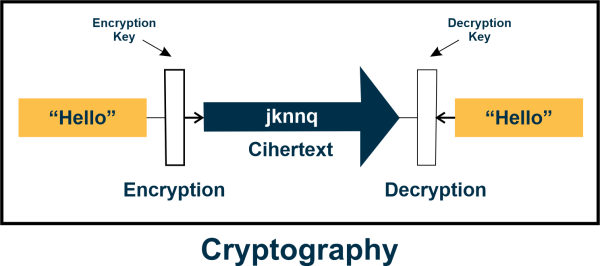Advantages and Disadvantages of CryptographyToday's networks span the globe, and data exists in the form of bits and bytes. On computer systems and open communication channels, crucial data is directly collected, analyzed, and delivered in digital format. Due to the significant function that information plays, attackers are focusing on computer systems and open channels of communication in an effort to either acquire sensitive data or take down the essential information system. Modern encryption offers a powerful set of methods to guarantee information access for authorized users while thwarting the adversary's malicious objectives. In this chapter, we will talk about the advantages of cryptography, its drawbacks, and its potential for the future. 
Advantages of CryptographyA crucial instrument for information security is cryptography. It offers the four most fundamental information security services:
With the help of all these essential functions provided by cryptography, it is now possible to conduct business exceedingly effectively and efficiently through networks using computer systems. Disadvantages of CryptographyOther challenges that affect the efficient use of information exist in addition to the four basic components of information security are as follows:
Scopes and Improvements in CryptographyAlthough Elliptic Curve Cryptography (ECC) has been developed, its benefits and drawbacks are still not completely grasped. ECC enables encryption and decryption to be completed in a vastly shorter length of time, allowing for the secure transmission of more data. However, before it is approved for usage by the government, businesses, and individuals, ECC must also undergo testing and be shown to be secure. The latest trend is quantum computing. A quantum computer stores data using a quantum superposition of several states, as opposed to contemporary computers, which use a binary format termed a "bit" in which a "1" or a "0" can only be recorded. "Quantum bits" or "qubits" are used to store these many valued states. This makes it possible to compute numbers far more quickly than conventional transistor processors-by several orders of magnitude. A 193-digit number called RSA-640, which can be factored by 80 machines running at 2.2GHz over the course of five months, can be factored in less than seventeen seconds by a quantum computer. This helps demonstrate the strength of quantum computers. With a fully built quantum computer, calculations that would ordinarily take billions of years may be completed in a matter of hours or even minutes. With these realities in mind, modern cryptography will need to search for computationally more challenging issues or develop whole new approaches to archive the purposes that modern encryption currently serves.
Next TopicAdvantages and Disadvantages of Friction
|
 For Videos Join Our Youtube Channel: Join Now
For Videos Join Our Youtube Channel: Join Now
Feedback
- Send your Feedback to [email protected]
Help Others, Please Share










